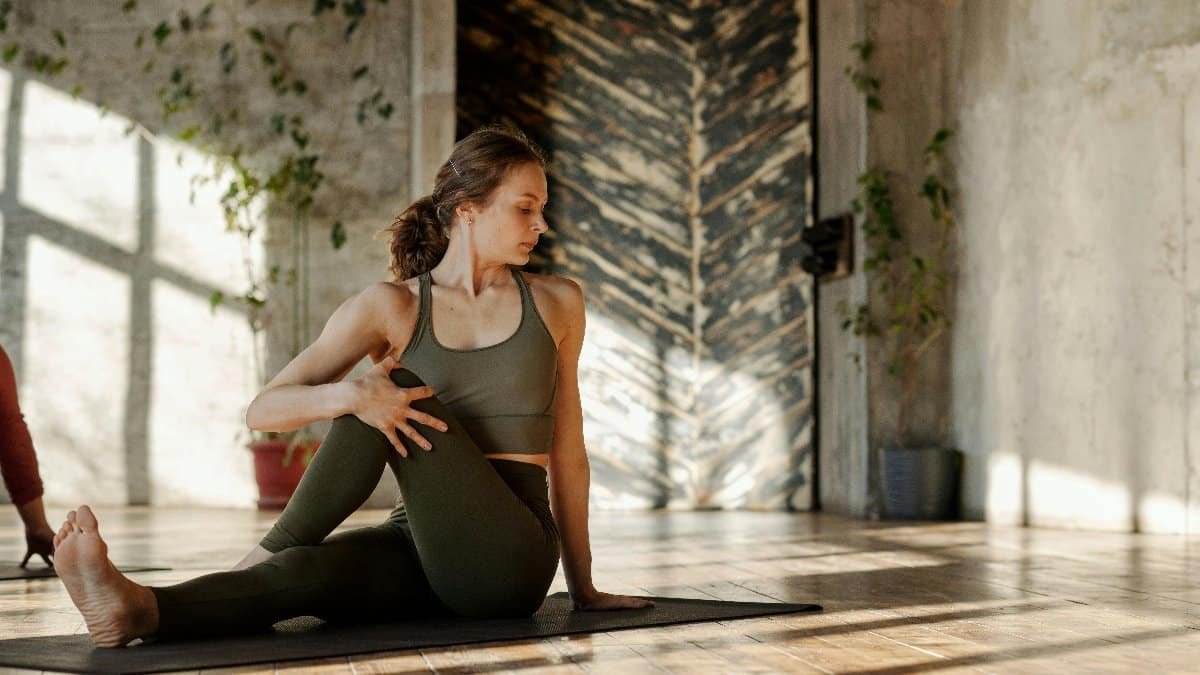Could a simple shift in how we move through our days be the key to feeling more centered? In a world of endless productivity hacks and wellness trends, the idea of using movement routines as a balance hack for body and mind is gaining traction. Forget the image of a distant guru on a mountaintop; this approach is grounded in everyday actions accessible to anyone, anywhere. From stretching at your desk to walking with intention, these practices promise a quieter mind and a stronger body without requiring hours of meditation or esoteric knowledge. As stress levels climb in 2025, with over 60% of Americans reporting feeling overwhelmed by daily demands according to a recent American Psychological Association survey, the appeal of such straightforward solutions feels urgent. This isn’t about perfection—it’s about small, deliberate steps. Let’s unpack 12 movement routines that can help recalibrate your life, no guru required.
1. Morning Stretch Sequence

A five-minute stretch right after waking can set a different tone for the day. Picture rolling out of bed, standing barefoot on a cool floor, and reaching for the ceiling while breathing deeply. This isn’t about contorting into impossible shapes; it’s about loosening tight muscles and signaling to your brain that you’re awake and present. Research from Johns Hopkins Medicine highlights how even brief stretching improves flexibility and reduces tension. Try a simple sequence: reach up, bend side to side, then touch your toes. That’s it. Over time, this ritual becomes a quiet anchor.
One woman in her forties shared how this small habit changed her mornings. “Before, I’d rush into emails and feel frazzled by 9 a.m.,” she admitted. “Now, stretching gives me a minute to just be.” Her story mirrors a broader shift—movement as a reset, not a chore.
2. Desk-Based Micro-Movements

For those tethered to a desk, the body often pays the price. Shoulders hunch, backs ache. But tiny movements can counteract this. Every hour, stand up, roll your shoulders back five times, and take a deep breath. It’s not flashy, but it works. The Mayo Clinic notes that breaking up sedentary time reduces risks of chronic pain. No gym needed—just a willingness to pause.
These micro-movements also nudge the mind. After a few rounds, the fog of a long workday can lift, even slightly. It’s less about intensity and more about consistency. Pair it with a quick glance out the window, and suddenly, you’ve hacked a moment of balance.
3. Walking with Awareness

Walking isn’t just exercise; it can be a meditation if done with focus. Instead of zoning out with earbuds, notice each step. Feel your heel hit the ground, then roll to your toes. Sync your breath with your stride. This twist on a daily habit transforms it into one of those movement routines balance hack body mind guru enthusiasts might tout—minus the jargon. Studies from the National Institutes of Health suggest mindful walking lowers stress hormones. Try it on a lunch break or even pacing your hallway.
4. Evening Yoga Flow

As the day winds down, a gentle yoga flow can unravel built-up tension. Think child’s pose, cat-cow, and a slow twist—nothing advanced. Dim the lights, roll out a mat or even use the carpet, and move for ten minutes. The goal isn’t to sweat but to release. It’s a quiet dialogue between body and mind, no guru wisdom necessary.
This practice resonates especially in 2025, as more Americans juggle hybrid work and home stress. A short flow becomes a boundary, marking the shift from “on” to “off.” One online account described it as “like hitting a reset button before bed.” That sentiment captures why this sticks.
5. Dance Break for Joy

Ever notice how a good song makes your foot tap without thinking? Lean into that. Crank up a favorite track—Motown, hip-hop, whatever moves you—and dance for three minutes. Flail if you must. It’s not about skill; it’s about shaking off stagnation. The endorphin rush is real, and laughter often follows. Movement like this cuts through mental clutter instantly.
6. Breath-Synced Arm Swings

Stand tall, swing your arms gently forward and back, and match the rhythm to your breath. Inhale as they rise, exhale as they fall. This simple motion, doable in a cramped apartment or office corner, syncs body and mind. It’s subtle but grounding, a quick hack for balance when time is tight.
7. Stair-Climbing with Intention

Skip the elevator once a day and take the stairs, but don’t rush. Focus on each step, feeling your legs engage. It’s a sneaky way to build strength while clearing your head. At the top, pause and notice your heartbeat. Small efforts like this accumulate, rewiring how you carry stress.
8. Side-to-Side Sway

Standing still, shift your weight from one foot to the other, letting your hips sway gently. Imagine you’re a tree in a breeze. It’s almost imperceptible to others, so it works in public spaces. This movement eases lower back tightness and quiets a racing mind, blending physical relief with mental calm.
9. Seated Spinal Twists

While sitting—on a chair, couch, or floor—cross one leg over the other and twist your torso gently. Hold for a breath, then switch sides. It’s a discreet way to release spinal tension, especially after hours of stillness. Pair it with a slow exhale, and the effect deepens. Accessibility makes this a go-to for many.
10. Barefoot Grounding Walk

If you’ve got a patch of grass or sand nearby, kick off your shoes and walk slowly for a few minutes. Feel the texture underfoot—cool, prickly, soft. This “grounding” isn’t just trendy; it reconnects you to the present. Some say it reduces inflammation, though science is still catching up. Either way, the sensory shift is undeniable.
11. Dynamic Desk Stretches

Beyond micro-movements, try a bolder desk stretch. Stand, place one hand on your chair, and lean to the side, stretching your torso. Hold for ten seconds, switch sides. It’s awkward at first, sure, but it counters the slump of screen time. Colleagues might raise an eyebrow, yet the relief speaks for itself.
12. Post-Dinner Slow Pace

After eating, resist the couch’s pull. Walk around your home or block for ten minutes at a leisurely pace. It aids digestion, yes, but also unwinds the day’s mental knots. One man in his fifties called it “my nightly debrief with myself.” That framing—movement as reflection—turns a mundane act into something deeper.
These 12 routines aren’t a cure-all, nor do they require a movement routines balance hack body mind guru to decode them. They’re practical, rooted in the idea that balance comes from action, not overthinking. In a culture obsessed with optimization, there’s power in simplicity. Whether it’s swaying side to side or climbing stairs with purpose, each movement carves out space for clarity. The data backs this up—regular, intentional activity boosts both mood and physical health, per countless studies. But beyond numbers, it’s the felt shift that matters. A lighter step. A steadier breath. In 2025, as life’s pace only quickens, these small pivots might just be the grounding we’ve been searching for. So, pick one. Start today. See where it takes you.
